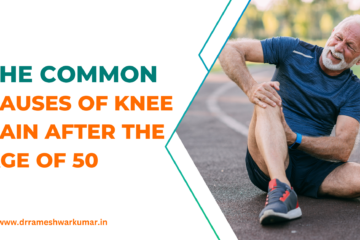Knee pain is a prevalent issue that affects people of all ages, often limiting mobility and causing discomfort. In this comprehensive guide, we will explore effective strategies to help you find relief from knee pain and regain your quality of life.
Understanding the Causes
Before delving into remedies, it’s crucial to understand the potential causes of knee pain. Common culprits include:
Arthritis
Osteoarthritis and rheumatoid arthritis are leading causes of chronic knee pain. In osteoarthritis, the protective cartilage that cushions the ends of the bones wears down over time, leading to pain and stiffness. Rheumatoid arthritis, an autoimmune disease, causes inflammation in the joints, including the knees.
Injuries
Ligament tears, meniscus injuries, and fractures can result in acute knee pain. These injuries often occur during sports activities, accidents, or sudden twists and impacts.
Overuse and Strain
Excessive strain from activities like running, weightlifting, or repetitive motions can lead to knee pain. This strain may cause inflammation, leading to discomfort and limited mobility.
Rest and Elevation
One of the initial steps in alleviating knee pain is to provide ample rest to the affected knee. This means avoiding activities that put undue stress on the joint. Elevating the leg helps reduce swelling and promotes faster healing by allowing excess fluid to drain away from the area.
Cold Compress Application
Applying a cold compress or ice pack to the affected knee can significantly reduce inflammation and numb the pain. This should be done in intervals of 15-20 minutes, ensuring that the cold pack is wrapped in a thin cloth to prevent direct contact with the skin. Cold therapy works by constricting blood vessels, which helps to decrease swelling and inflammation.
Gentle Exercises for Flexibility
Engaging in low-impact exercises like swimming, stationary cycling, or gentle stretching helps maintain flexibility and strengthen the muscles around the knee joint. These exercises improve blood flow, reduce stiffness, and support the healing process. Remember to start slowly and gradually increase intensity to avoid further strain.
Strengthening Exercises
Targeted exercises focusing on the quadriceps, hamstrings, and calf muscles can provide added support to the knee joint, reducing pain and discomfort. Leg raises, squats, and hamstring curls are excellent options for building strength in the lower body.
Anti-Inflammatory Diet
Incorporating anti-inflammatory foods into your diet can aid in reducing pain and inflammation. Turmeric, known for its active compound curcumin, has potent anti-inflammatory properties. Ginger, rich in gingerols, is another powerful natural anti-inflammatory. Foods high in Omega-3 fatty acids, such as fatty fish (salmon, mackerel) and flaxseeds, can also help combat inflammation.
Proper Footwear
Wearing supportive and well-fitted shoes can have a significant impact on knee health. Avoid high heels, as they can place excess pressure on the knees. Opt for shoes with adequate arch support and cushioning to help distribute your weight evenly across your feet.
Weight Management
Maintaining a healthy body weight is crucial for minimizing stress on the knees. Extra weight places additional strain on the knee joints, potentially exacerbating pain and discomfort. A balanced diet and regular exercise regimen contribute to overall joint health.
Warm Compress Application
After the initial stages of cold compress application, transitioning to warm compresses or heating pads can help relax muscles and improve blood circulation. Warmth encourages blood flow to the area, which can aid in the healing process.
Compression Wraps
Using compression bandages or wraps can provide additional support to the knee joint, aiding in the reduction of swelling and instability. These wraps help stabilize the knee, preventing excessive movement that could further aggravate the condition.
When to Seek Professional Help
While these strategies can be highly effective, it’s essential to consult a healthcare professional if the pain persists or worsens. They can provide a proper diagnosis and recommend further treatment options, which may include physical therapy, medication, or, in severe cases, surgery.
Conclusion
Managing knee pain requires a multifaceted approach that combines rest, targeted exercises, and lifestyle adjustments. By following these strategies, you can take significant steps towards alleviating knee pain and regaining your quality of life. Remember, consistency is key, and it’s essential to listen to your body throughout the process. With dedication and the right techniques, you can find relief from knee pain and enjoy a more active, fulfilling life.




